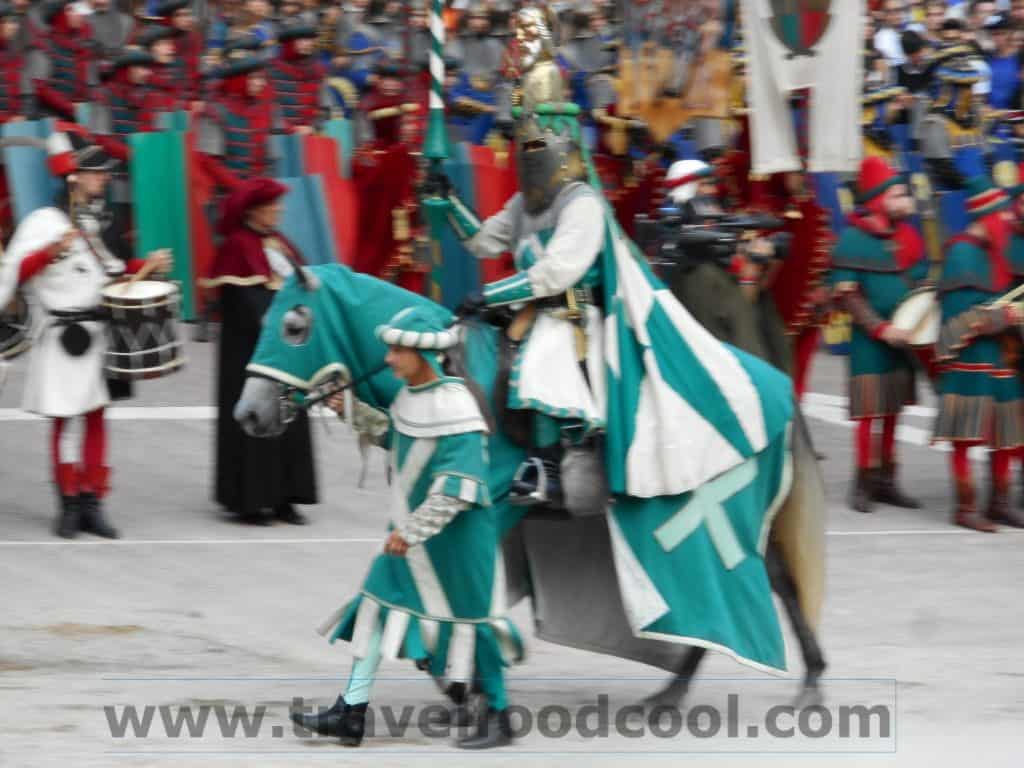
Happy Victoria Day, Canada! I hope everyone is enjoying the day off! If you’re wondering what to do next month (or in September), here is something to put on your “must see” list! The good news? There’s still time to book your trip to Italy!
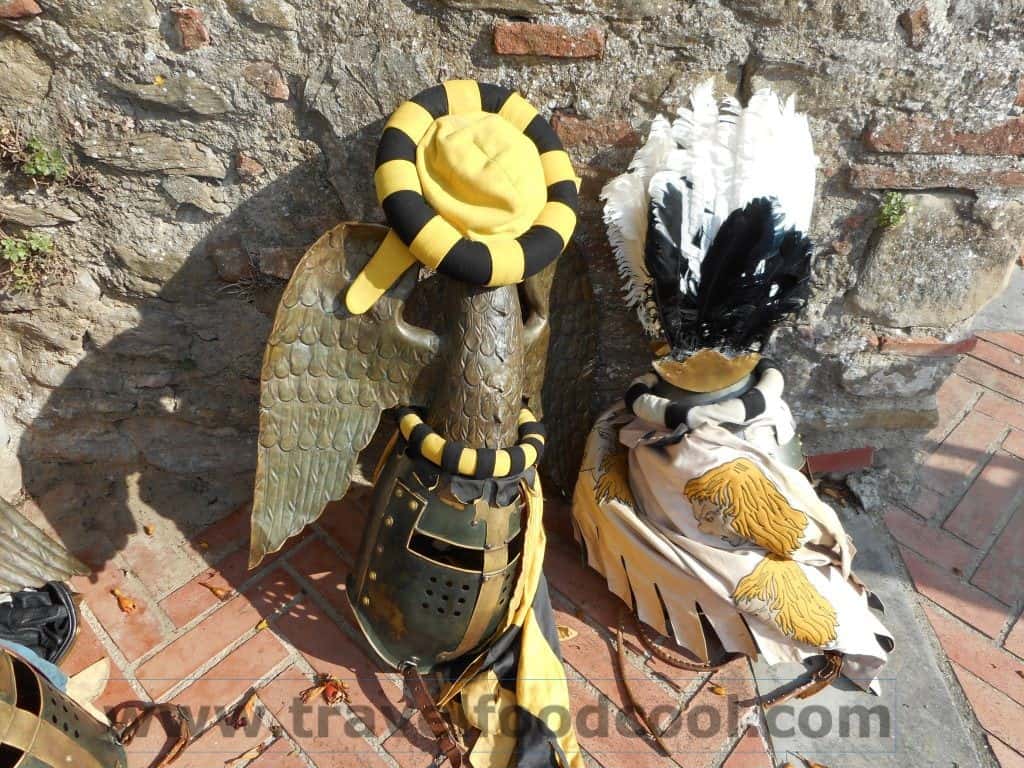
I’ve been to Arezzo many times and, as you know, I love the Antique Market. If you go to the Antique Market on in September, you’ll notice that the vendors are all set up in the park. The usually-full Piazza Grande is now covered in bleachers and a jousting track has been constructed. This is all in anticipation of La Giostra del Saracino (The Joust of the Sarcen (Moor)) which has been held twice a year in Arezzo since 1931. With the exception of World War II, Arezzo had held the popular festival twice a year.
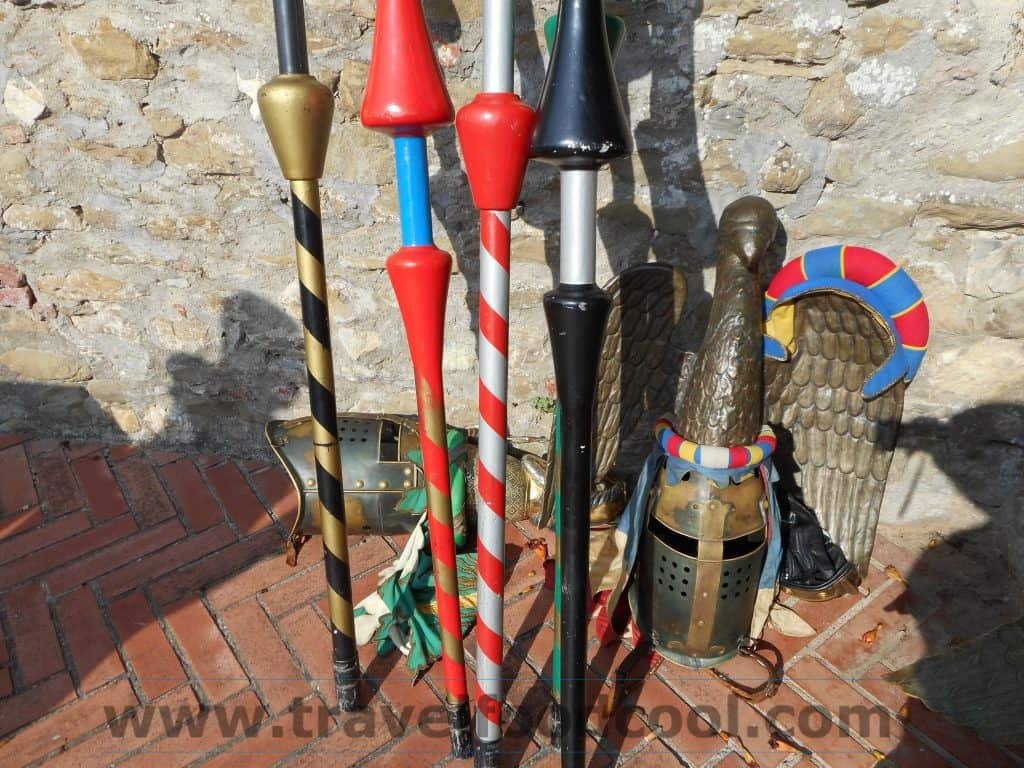
The Joust is held the third Saturday in June and the first Sunday in September. Like the Palio in Siena, the events start a week earlier leading up to the big day. Captains take their oaths and the charging and practice sequences for the week (held in the evening) are drawn. The whole city celebrates and everyone dresses in medieval costumes. Trumpets are blown, flags are tossed and horses are paraded about in anticipation of which of the quartieri (quarters) will win the coveted La Lancia D’Oro (the Golden Lance).
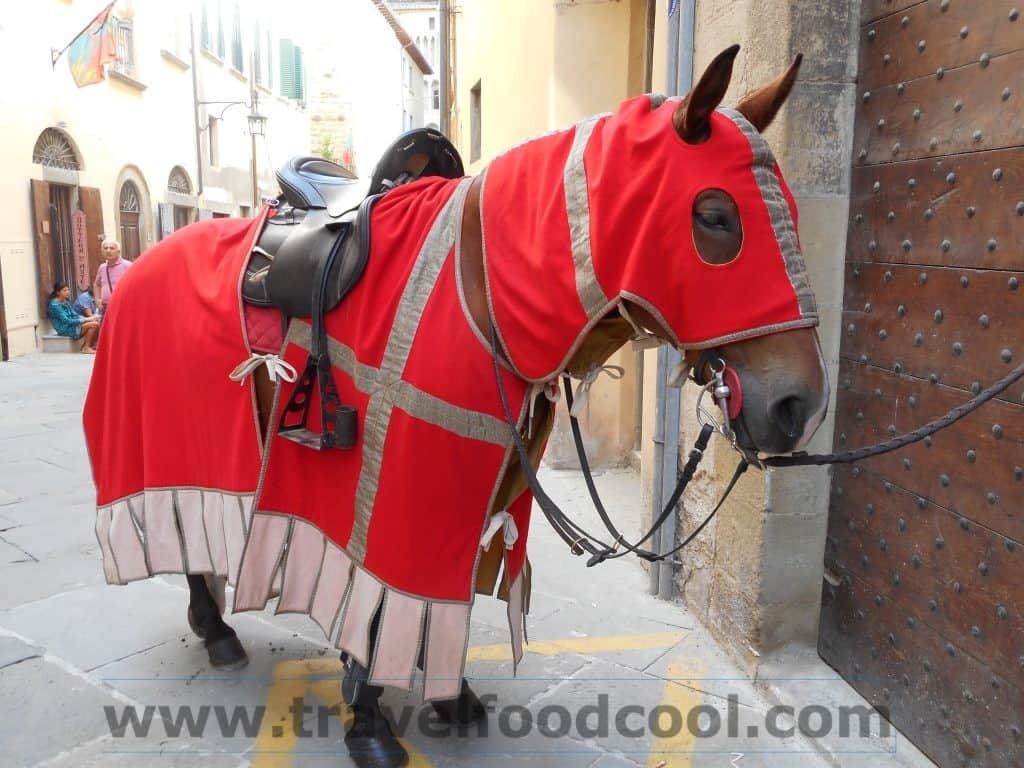
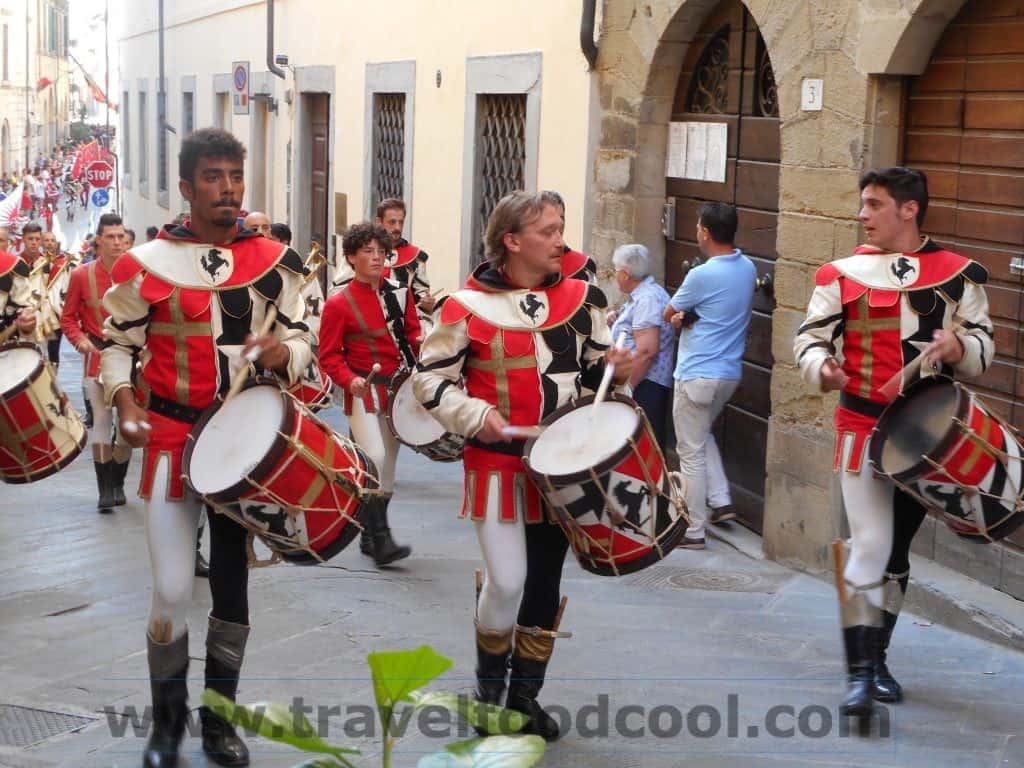
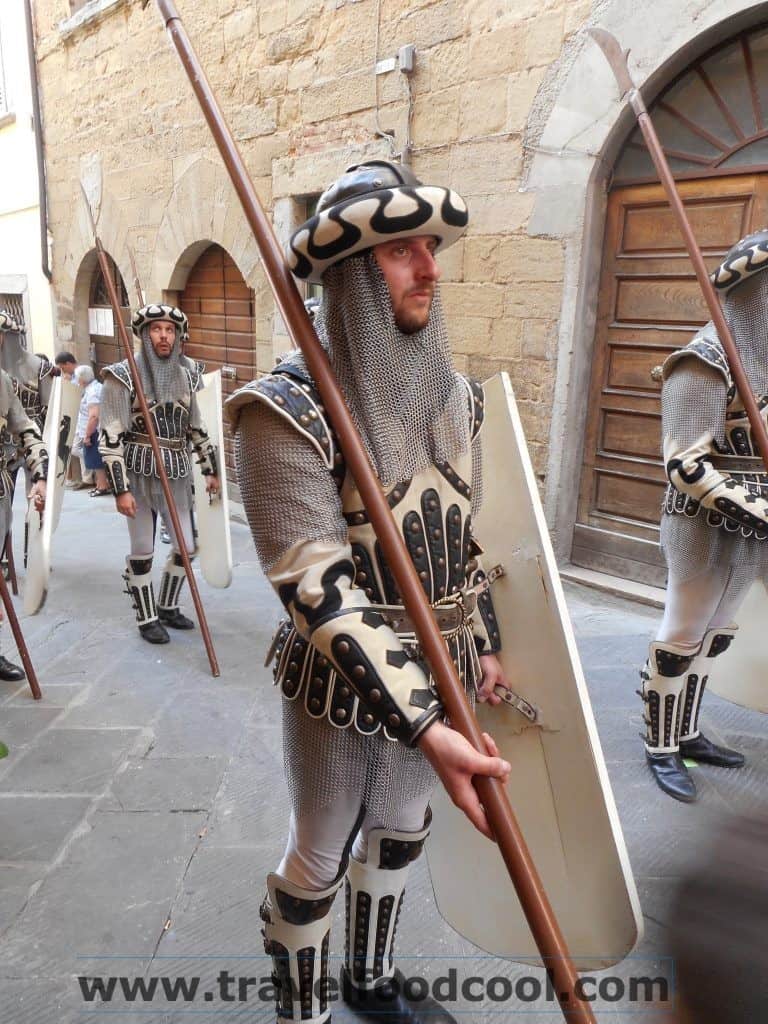
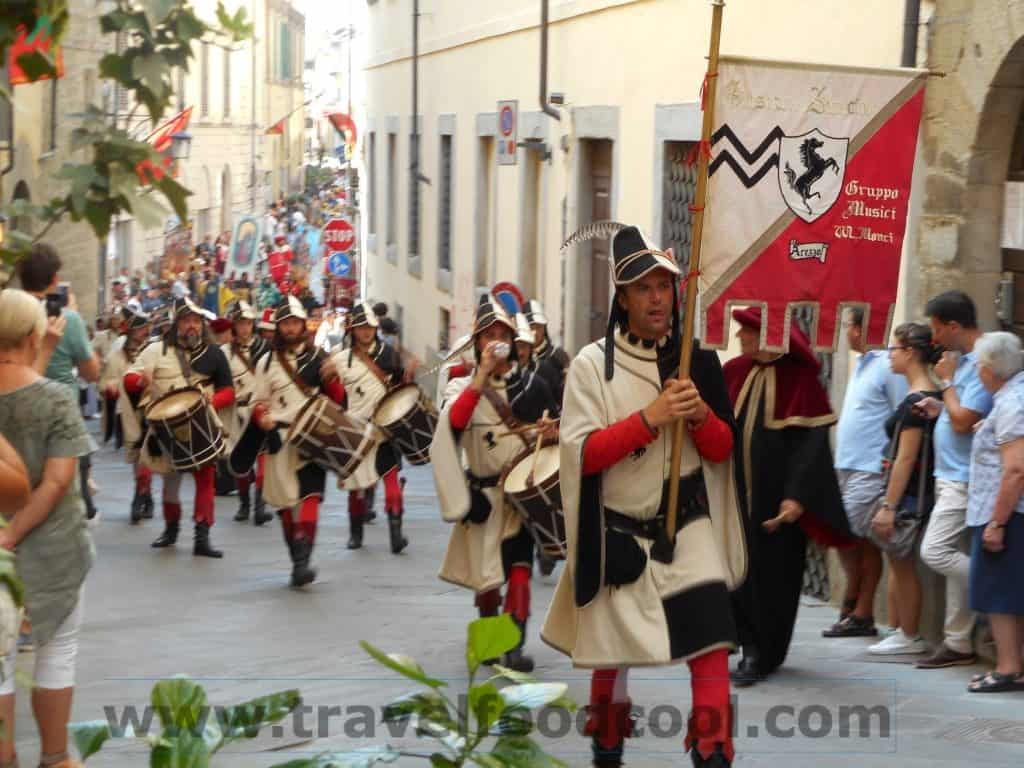
Make sure you get there early the day of the event. You will want to be in town when the pageantry starts! We were having a later lunch in an Arezzo restaurant when a procession marched by. Flags, drums, knights and horses! Dorothy, you are not in Kansas anymore!
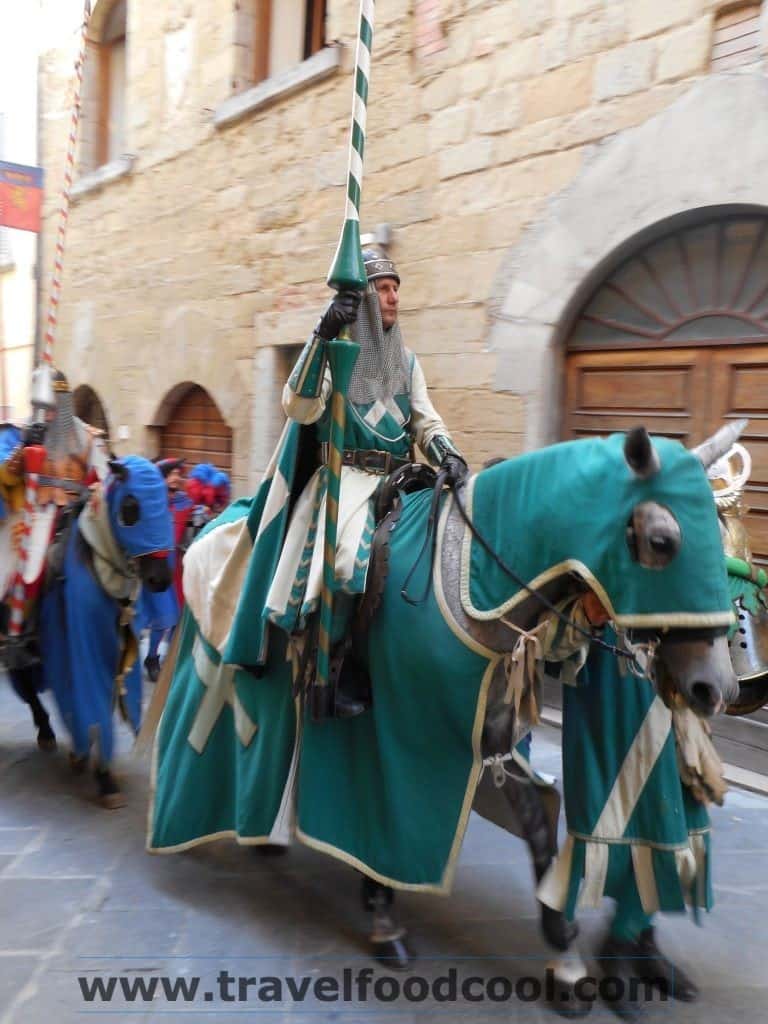
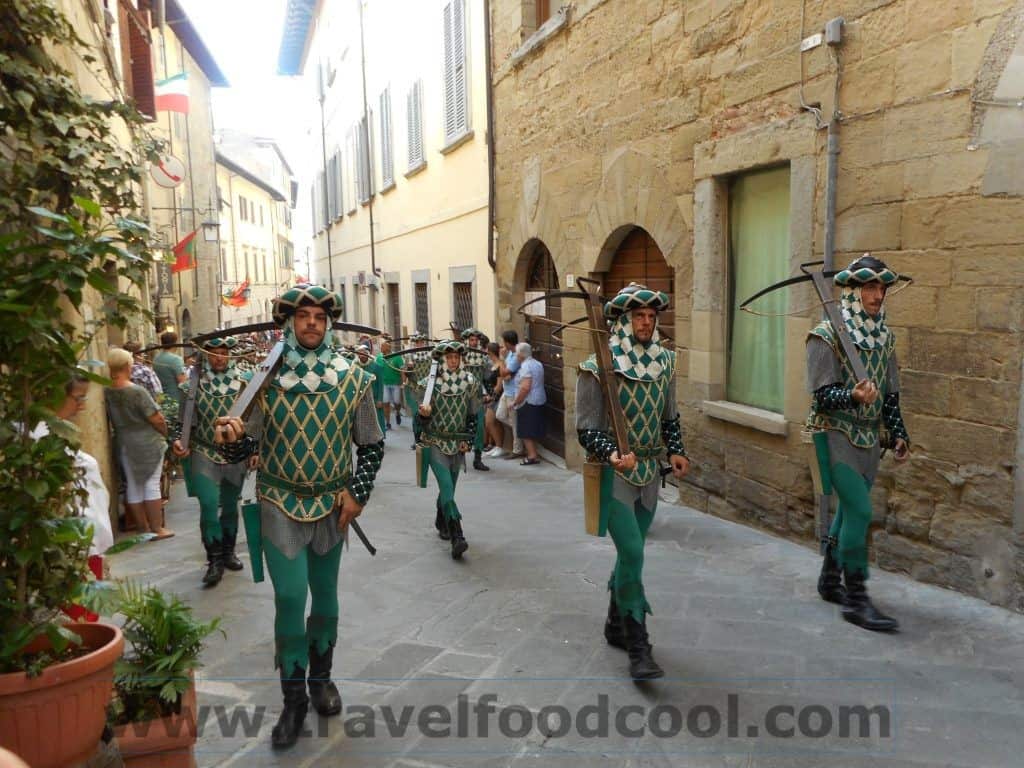
The day starts at 7 a.m. with the first mortar shot. The second shot sounds at 11 a.m. and starts the parade of over 300 participants dressed in costume. The blessing of the jousters occurs at 7 p.m. and one hour later at 8 p.m., the procession from the Duomo to the Piazza Grande occurs. Just before the start of the tournament at 9:30 p.m., the flag throwers strut their stuff and the parade enters the square. Naturally, the knights who are the stars of the evening enter last. (The September event starts at 5 p.m., so if you’re going to the September event, change the above noted times to 2:30 p.m. blessing, 3:30 p.m. procession and 5 p.m. start.)
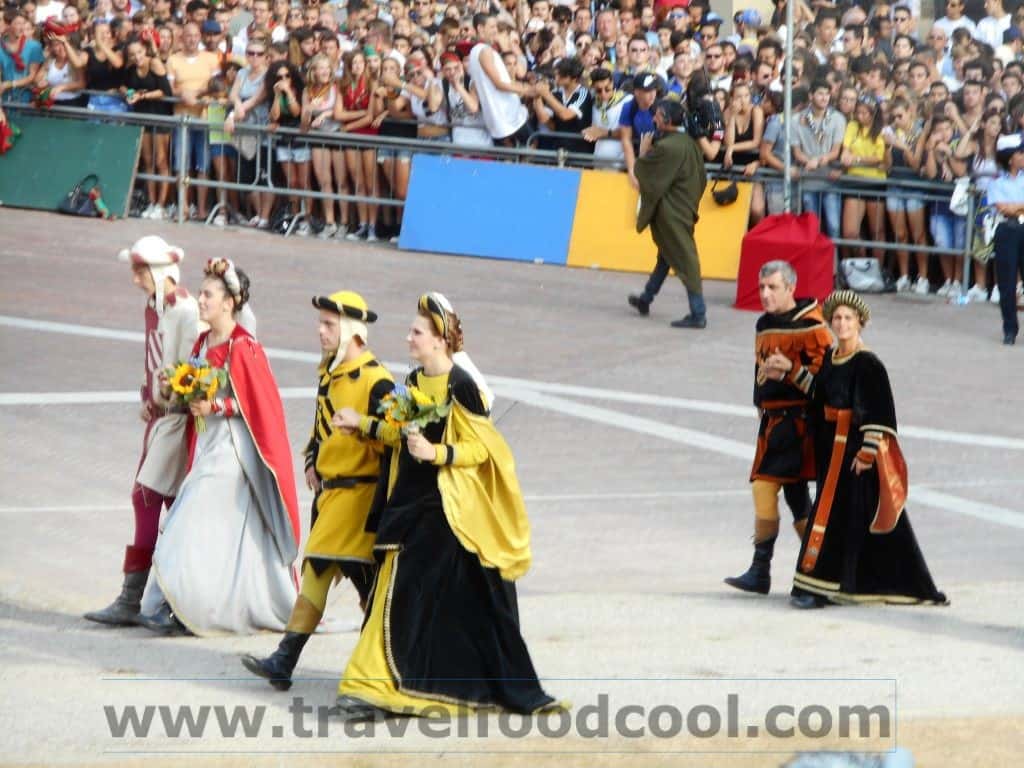
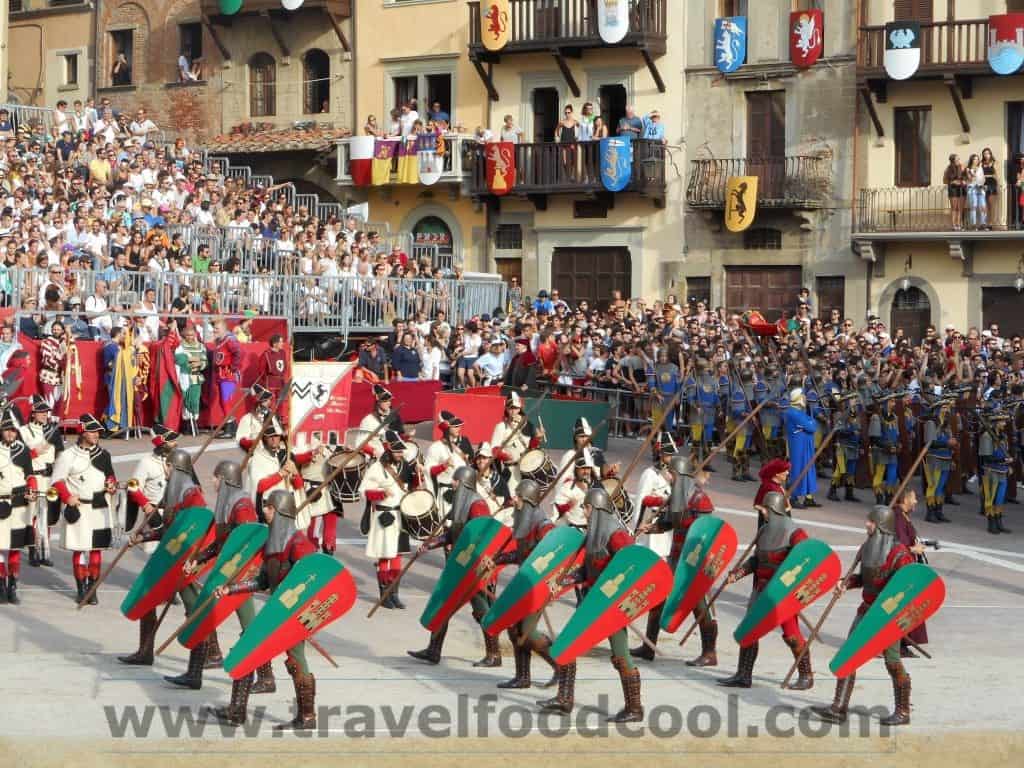
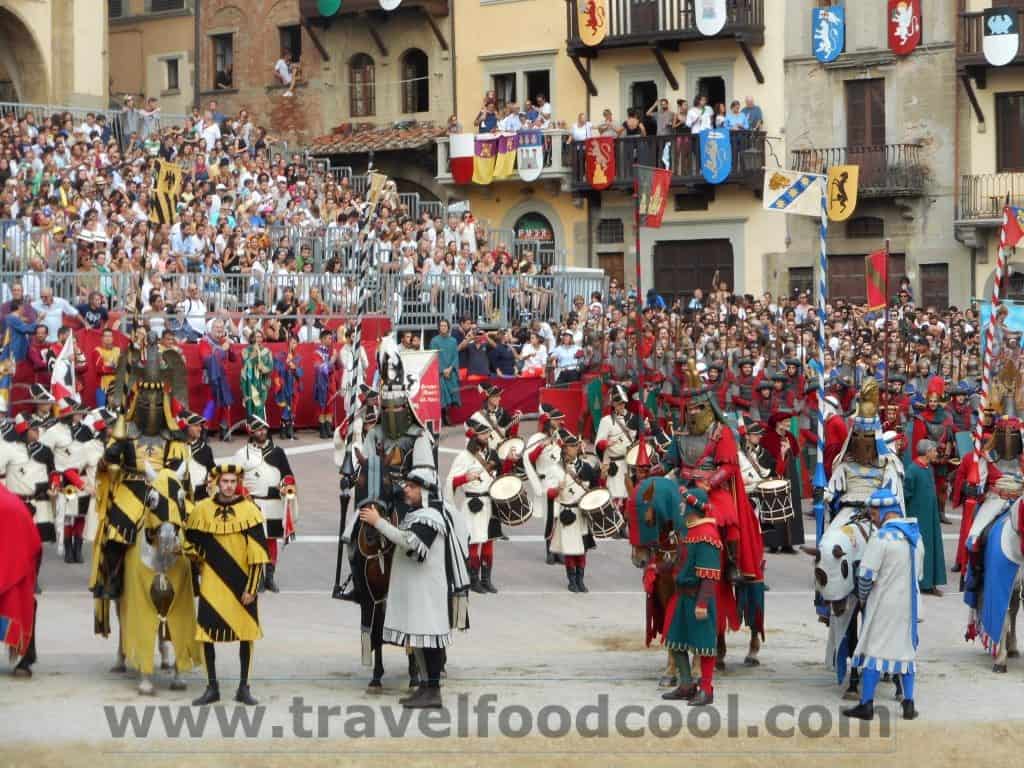

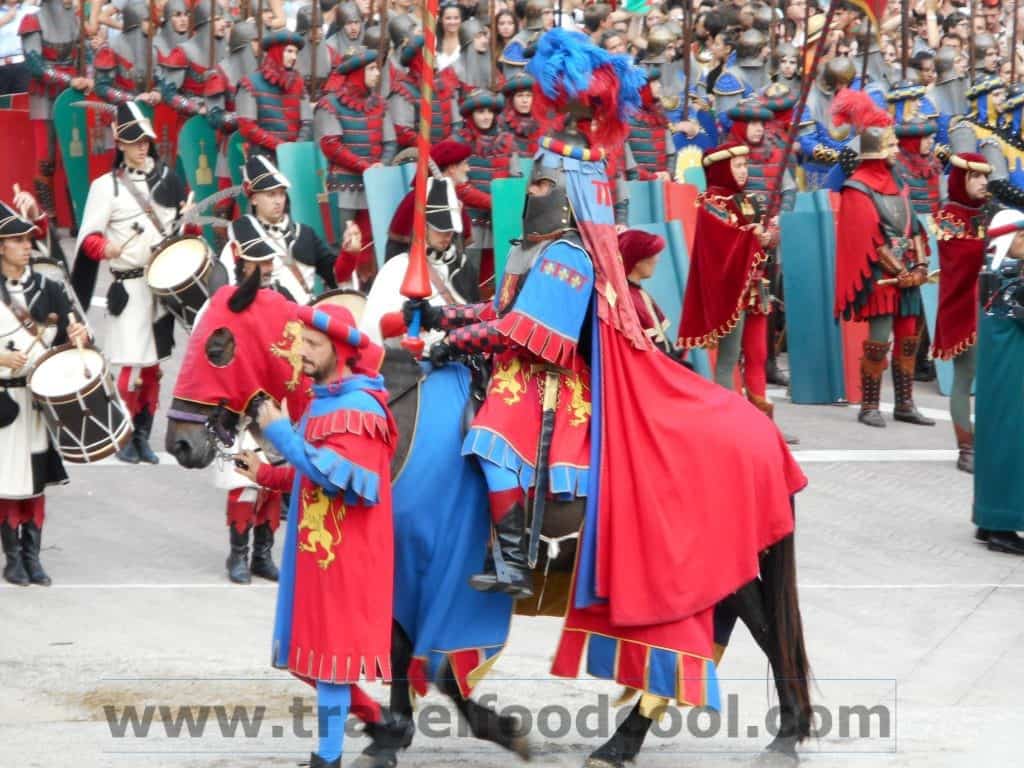
Part of the pomp and ceremony is the flag throwing. This gives the flag throwers a chance to show off and strut (and toss) their stuff!
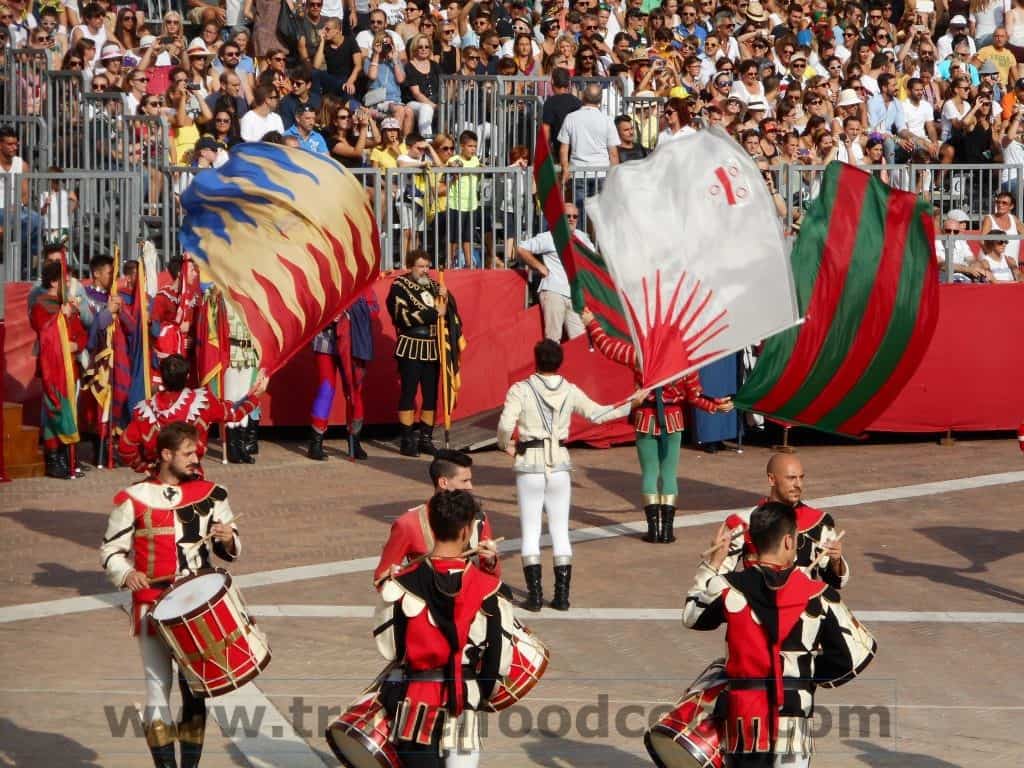
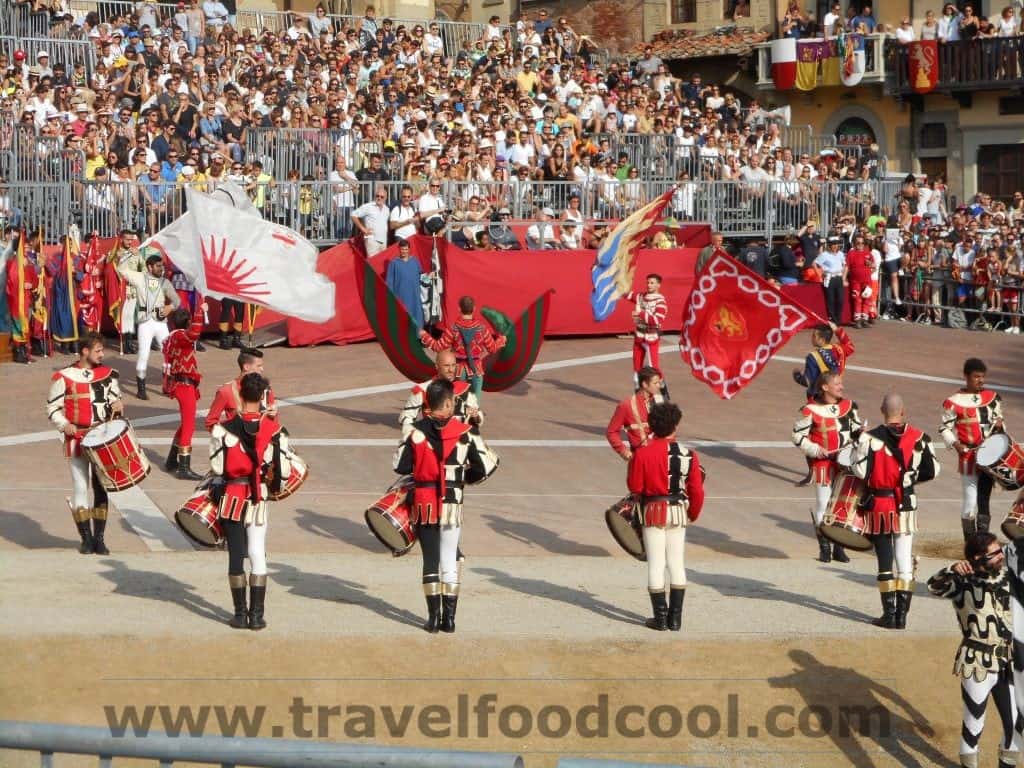
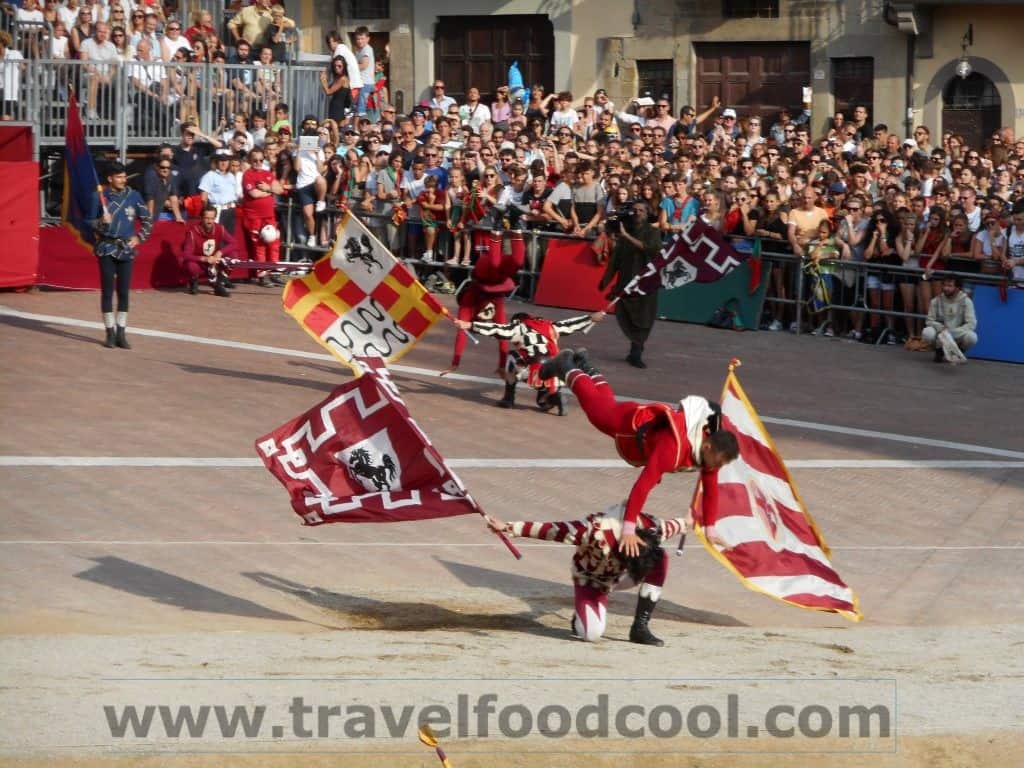
Watch the Flag Throwers in action!
The four quartieri (contradas if you prefer) of the city – Porta Crucifera, Porta del Foro, Sant Andrea and Porta Santo Spirito – each have two knights galloping on their horses and trying to hit the Buratto’s shield with their wooden lance.
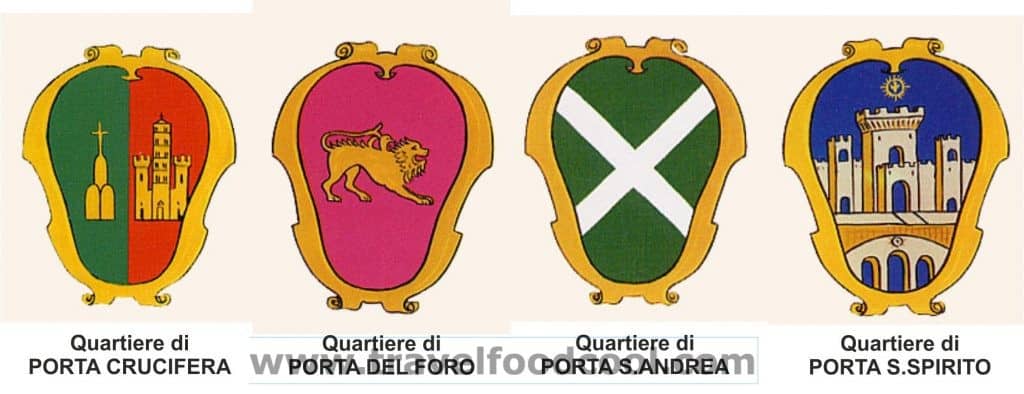
The object of their attention, the Buratto, is a mannequin of sorts, carved out of wood and covered with armour. He holds a shield in his left hand divided into sections – a red cross divides the sheet into four quadrants and a bull’s eye – scored by points (even the lines are worth points). Each knight gets two runs down the “lizza” (jousting track – which takes over Piazza Grande) to try to hit the Buratto’s shield and gain the most points. The winning quartieri is the one whose team has the most points. Now, it’s not that easy. Buratto is wound up and sits on a post that swivels. He also fights back by means of three leather balls attached to a chain, which he holds in his outstretched right hand.
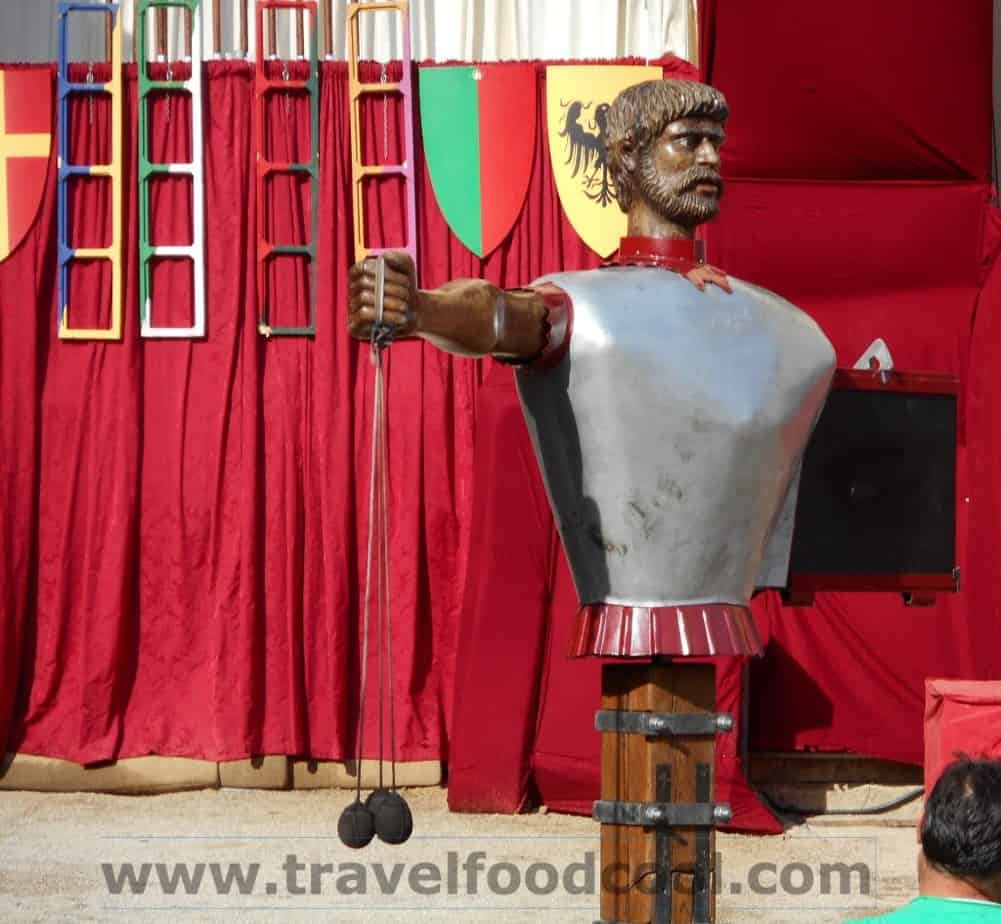
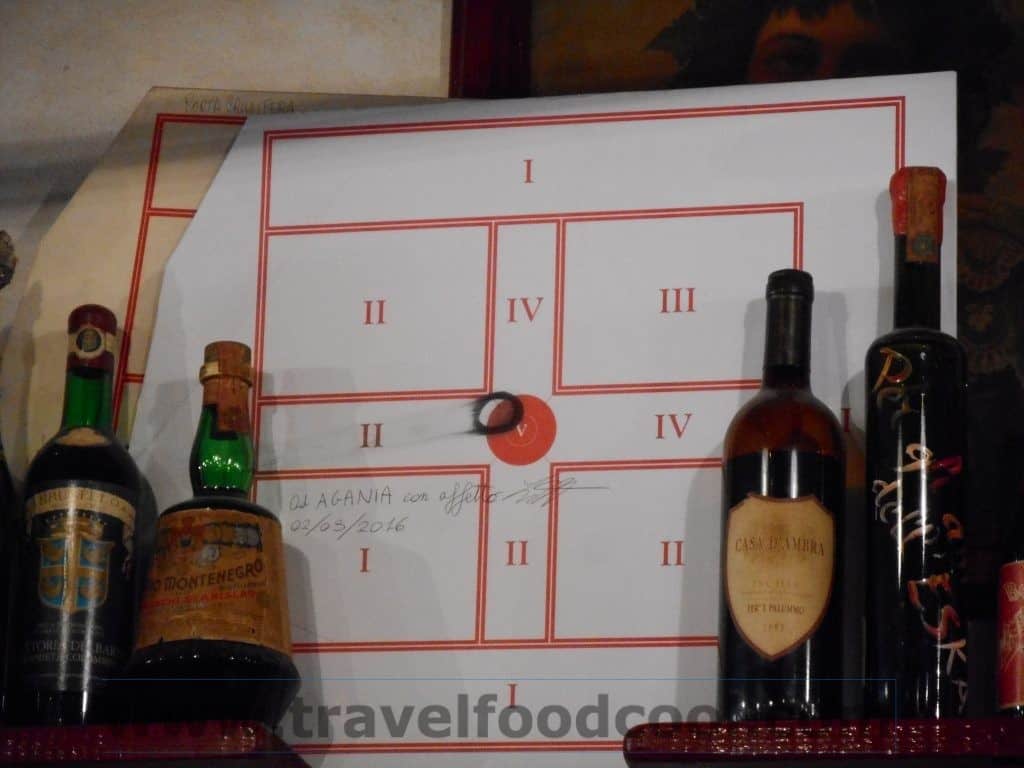
The knight must charge up, aim his lance at the shield (trying for the five-point bull’s eye), hit the Buratto and escape before the impact of the lance hit forces the Burratto to swing around and hit the knight with the balls.
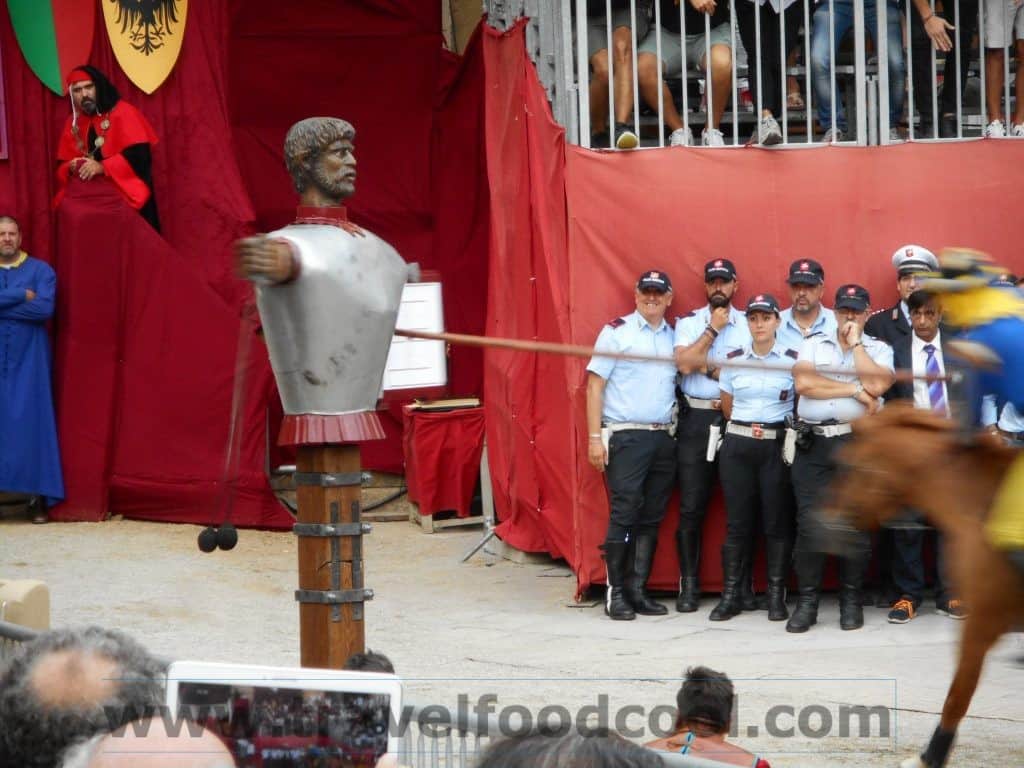
The scores are posted and the winning quartieri is the one with the most points.
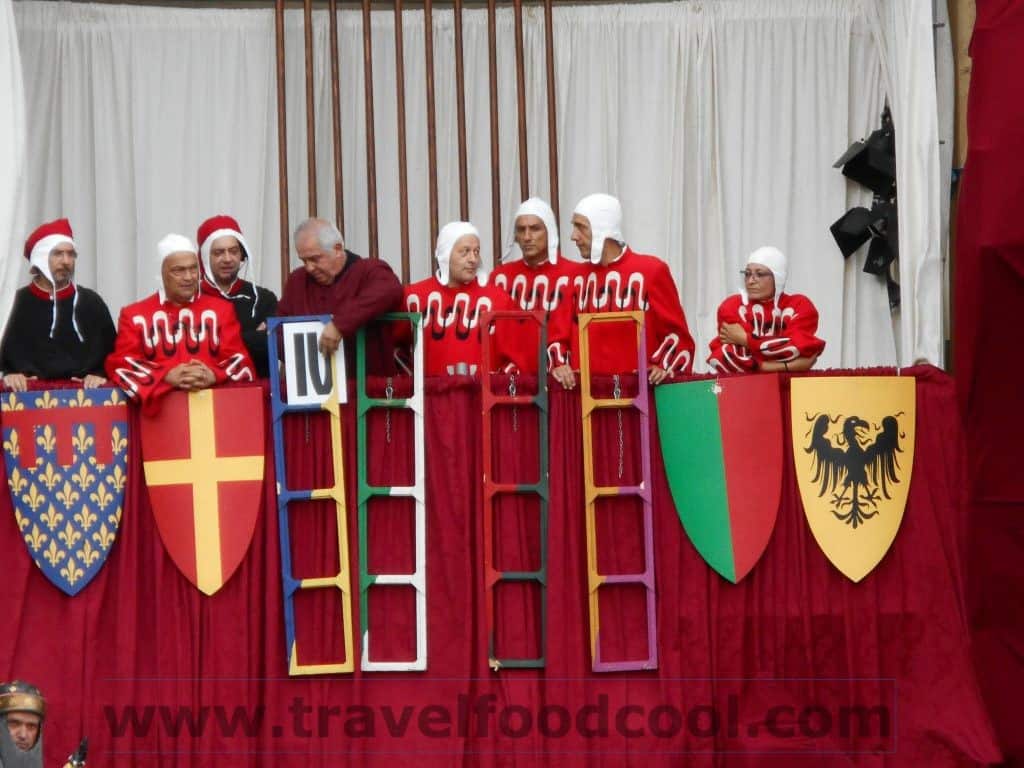
If there is a tie, the jousting continues. Teams are allowed an equal number of runs until there is a clear winner.
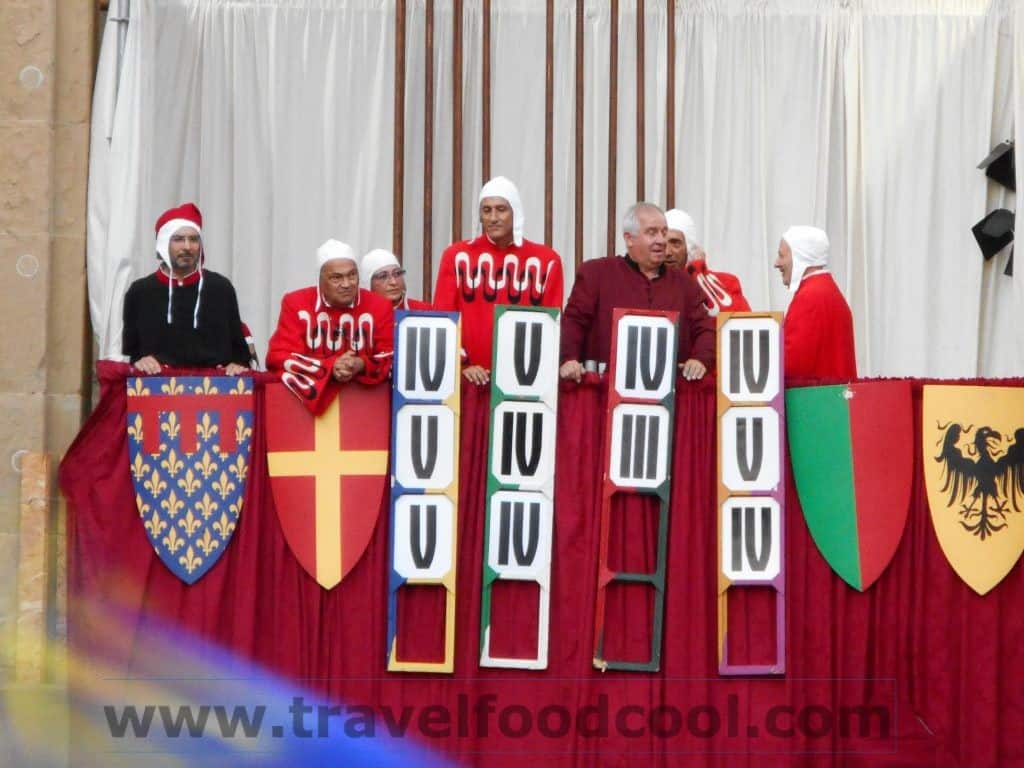
Once the winner has been announced, it is cause for great celebration by the winner quartieri!
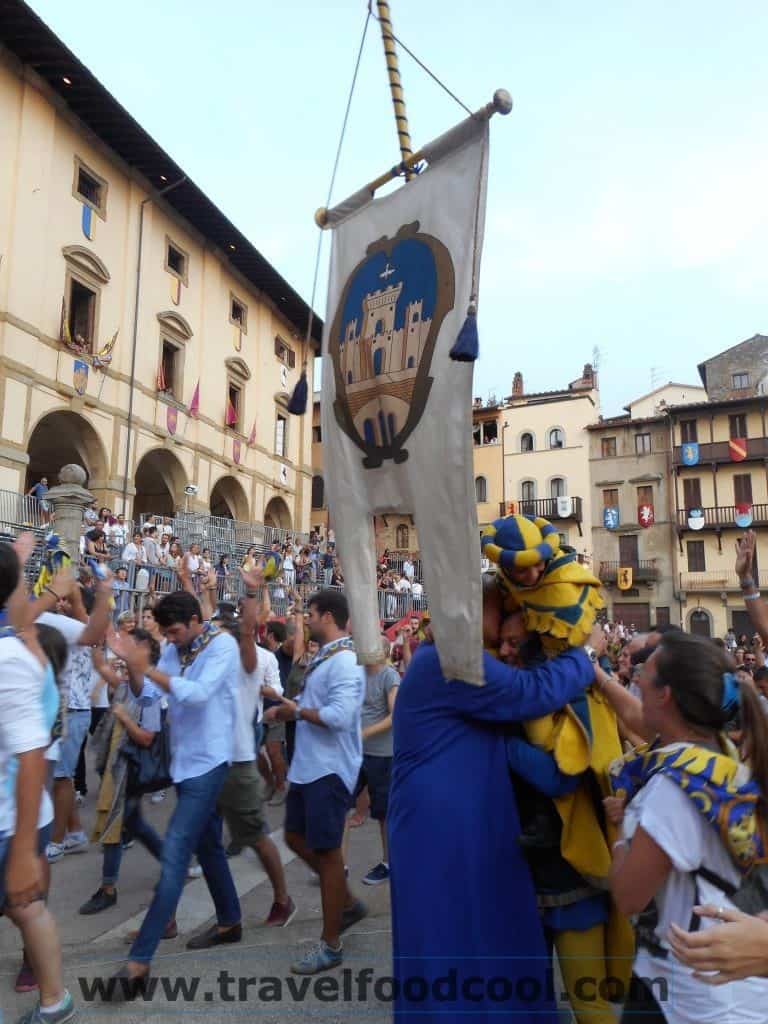
While the modern tournament’s history goes back to 1931, the origins of the joust for entertainment go back to the 16th and 17th century. The jousts themselves are based on military exercises going back to the Middle Ages. You never knew after all when you might have to go into battle (especially during the Crusades) against the enemy (who were usually the Moors).
What does it look like? An event that you’re going to want to see if you are in Italy at the end of June or beginning of September!
Watch the video to see the winning 5-point hit!
To purchase tickets for the seated bleachers (prices range from €40 – €100), you can reserve by email at giostradelsaracino@comune.arezzo.it or phone at 0575 377 462 or 0575 377 463. Standing spots in the main Piazza Grande are also available for a more modest fee of €6.
If you want to read more about the event, please check out Arezzo’s official site.





















